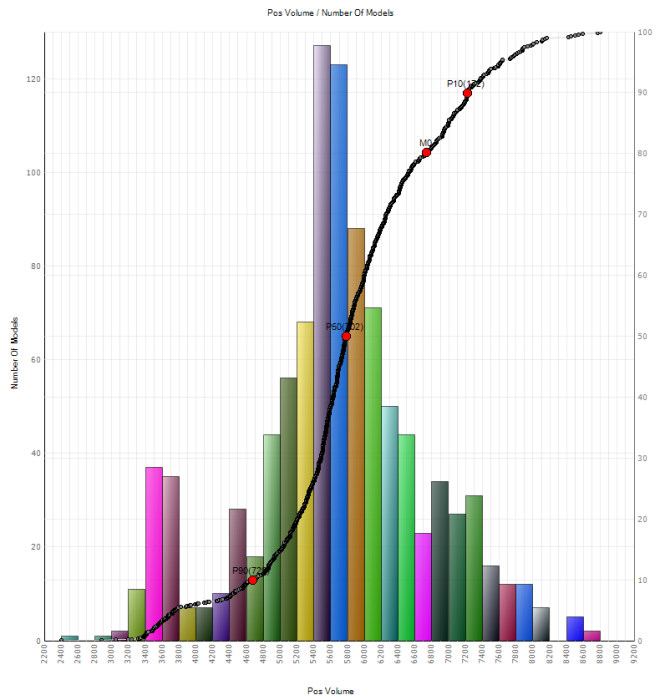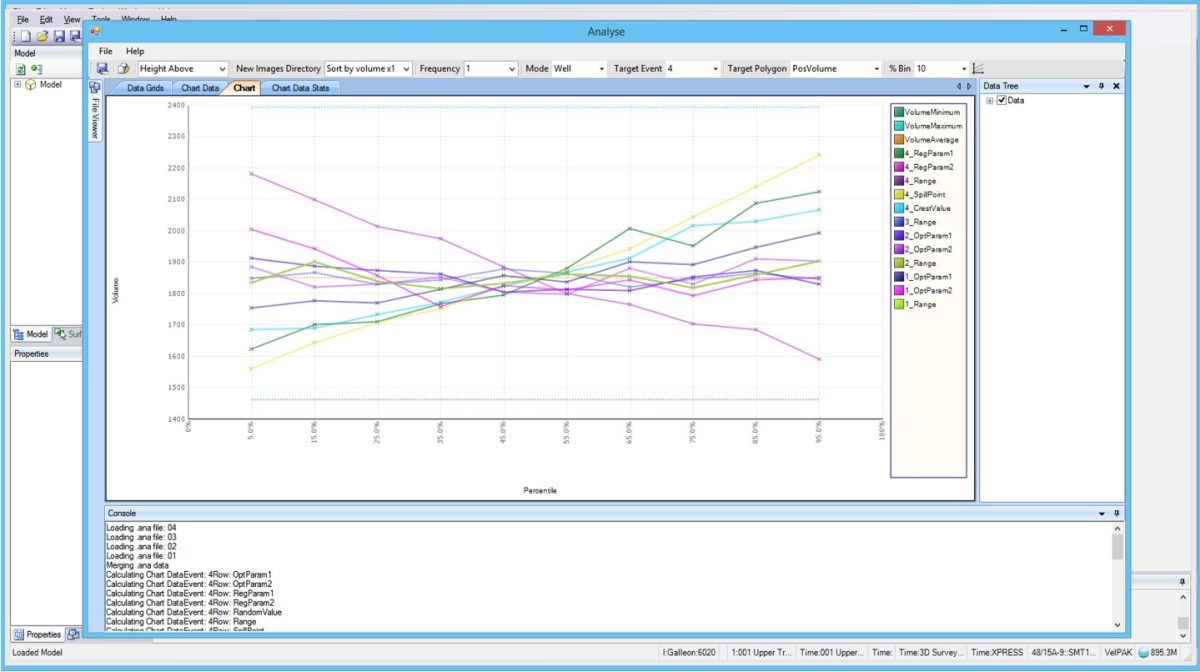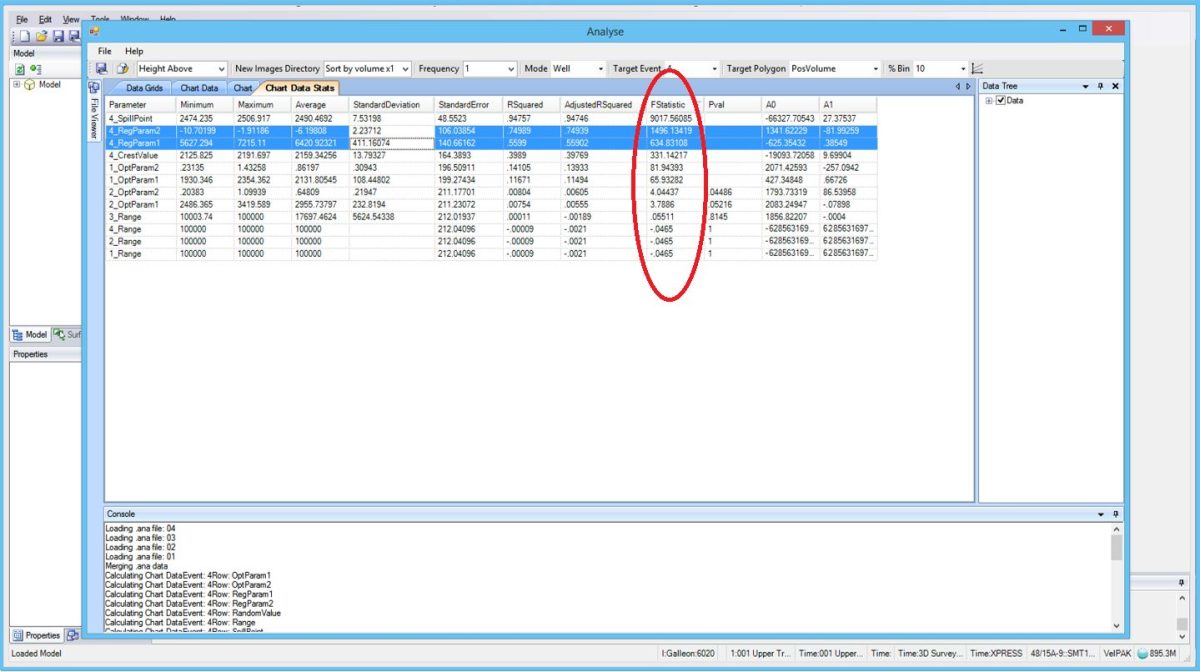Let’s face it, exploring for hydrocarbon bearing reservoirs several thousand kilometres beneath the surface of the earth is a risky business! Often, you have little more than a seismic picture or volume (which is in the time domain), several sonic logs (which can inform you about the velocity trends of the subsurface) and the processing velocities to go on. From this data you must accurately transform the seismic data from the time domain into depth, and your colleagues will then invest millions of dollars in drilling a well based on your work. There’s a lot of pressure on you to get your calculations right first time and you want to do a good job with the tools at your disposal.
Multiple Realisations
Your current workflow might involve some assessment of uncertainty. Perhaps you can vary a single parameter within your model, e.g. V0 for a significant layer, or provide a single percentage value you can adjust to gauge the overall Gross Rock Volume (GRV) of your prospect?
If this sounds familiar, then you’re going to be happy to know that we can help you significantly reduce the risk and uncertainty associated with your current velocity modelling and depth conversion workflows!
Velit achieves this by working differently.
Utilise Both Parametric and Lateral Variation Per Layer
Once you have created your layer-cake Best Technical Case model (having had the luxury of leveraging your seismic velocities to create pseudo-wells across your survey area), Velit enables you to vary the parameters you have selected per layer and automatically generate 1,000 depth models thereafter. You can even utilise both parametric variation (where you can investigate the depth variation resulting from uncertainty in the function parameters you have chosen) and encompass lateral uncertainty using Kriging and Sequential Gaussian Simulation and these may be used separately or in combination.
You have full control over the range of variation per layer and on top of that, the software is fully transparent, so you can understand exactly how it has determined the results.
But the best bit is that is it easy to use and on modern day PC’s it takes approximately 4 hours to generate all the realisations on an average size dataset. Once computed, the 1,000 depth models can be summed together to produce a probability of closure map which will give you strong confidence in your prediction of depth and the overall shape, size, and scale of your reservoir.
But wait … That’s Not All!
This process will determine where your Best Technical Case model is situated within the P10/P50/P90 range, which will qualify the quality of your starting model against the P50 value, for example. Then you might look at the total GRV range of the simulations and identify that it is perhaps too large for you to feel comfortable with.
Velit permits you to run Lever Analysis, whereby all the parameters of 1,000 models are assessed for their contribution to each model’s GRV value.
Using the F-Statistic technique (where the sensitivity of a function is determined by how proximal to zero it is) you can get a precise understanding of how a single layer, or the ranges you’ve chosen to vary around a specific function, control the overall GRV range.
In this image you can see how the higher value of the regression parameter for layer 4 (F-Stat value of 1496) is controlling the GRV, while the lower value of the regression parameter for layer 4 (F-Stat value of 634) is also relatively sensitive, versus the other functions and layers. Armed with this knowledge, you can then re-run the multiple realisations workflow, but this time either constrain, or turn off, the component which you have determined to be governing the sensitivity of the calculations. Doing this will tighten up the range between the P10 and P90 values and give you strong confidence in the economics of the reservoir.
The overall result of using Velit in this way is that you’ll have a technically robust series of steps which will go a long way toward being on target in depth and being right first time. There’s also a whole lot more the software can do, such as Column Height and Spill Point Calculations … but we’ll save that discussion for another time.
If you can’t currently perform this workflow in your existing software, then please get in touch with us now and we can arrange a demonstration and an evaluation licence for you to see the value when applied to your datasets.
If you’d like to know more about Velit then click here. To contact us for a free evaluation e-mail us on sales@equipoisesoftware.com.
The software is provided by S&P Global (who we partner with for Kingdom) with perpetual and subscription pricing available on request. We offer a series of Teams meetings throughout the evaluation to help you quickly step up the learning curve and enable you to see the results for yourself. We also provide a series of depth conversion training courses which you can click here to find out more.



